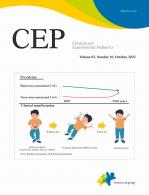Three-dimensional (3D) printing is a method of fabricating a 3D-shaped object using various materials. Research on 3D printing is active in the medical field. Among them, orthopedic oncology most actively applies 3D printing technologies, ranging from preoperative planning to accurate tumor resection and huge bone defect reconstruction.
In cases of malignant bone tumors, the main lesion is usually located inside the bone and grossly invisible unless extraosseous extensions are present. Therefore, tumor excision is usually performed under intraoperative C-arm guidance to secure an adequately wide margin. The use of a 3D printing technique can help preoperative planning via enabling direct mass visualization, 3D bone printing, and tumor modeling. Patient-specific instrument (PSI) using 3D printing is another breakthrough technique that can safely remove tumors if properly mounted. The authors reported their results using 3D printing for reconstruction after pelvic bone tumors, among the most difficult location to approach and expose, and showed no difference in accuracy in actual clinical sites with 3D printing PSI and comparing and analyzing the accuracy with other tools such as navigation [1,2].
Custom-made 3D-printed prostheses allow the treatment of large bone defects in difficult sites in the absence of a standard modular prosthetic implant [3]. Due to the various sizes and locations of bone defects and the need to provide personalized reconstruction, the creation of fixation implants is the most beneficial aspect of 3D printing for patients with malignant bone tumors. This technique is also promising in pediatric bone sarcoma cases since reconstruction is challenging due to small patient bone size. Moreover, properly sized prefabricated allografts or prostheses are often difficult to obtain. Thus, in the near future, 3D printing is likely to become an important reconstruction option for malignant bone tumors.
Several important issues prevent the practical use of 3D printing techniques. First, confirmation of its accuracy versus conventional resection strategies using PSI is necessary. The authors showed that PSI showed comparable accuracy in their studies with pelvic bone tumors [3]. Second, the longevity of 3D-printed versus modular prefabricated implants requires further confirmation. Although satisfactory functional results have been reported to date, the sample sizes were small and follow-up periods short [4,5]. Thus, a future long-term follow-up study is necessary to validate such findings.
The authors of the review article, "Application of 3-dimensional printing implants for bone tumors", are pioneers in this field who have outstanding experience performing 3D-printed reconstructions. The flow chart of the 3D implants fabricated using PSI was both concise and informative. In the future, 3D-printing is expected to play a more important role in the field of orthopedic oncology.





 PDF Links
PDF Links PubReader
PubReader ePub Link
ePub Link PubMed
PubMed Download Citation
Download Citation


